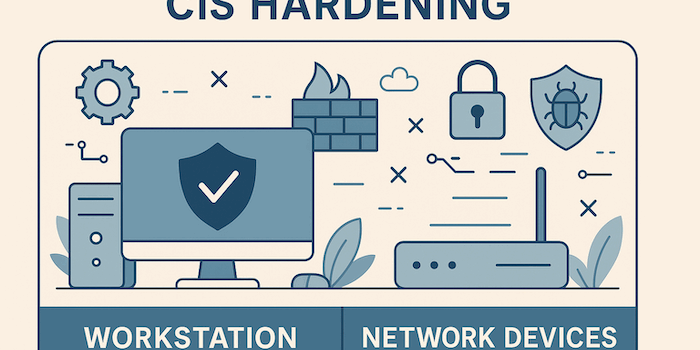Let’s face it — system hardening isn’t glamorous.
It’s not as exciting as catching a critical vulnerability during a pentest, or training an AI to spot threats in your SOC..
Most days, it feels like you’re just working through a never-ending checklist, disabling obscure services and tweaking registry keys that no one has touched since Windows XP.
But here’s the thing: hardening works — quietly, consistently and effectively.
A Task that Everyone Dreads
Hardening is one of those tasks that gives you no visual satisfaction.
There’s no blinking light, no “success” banner, no applause at the end. You simply close another unused port, apply another policy and move on.
It’s also repetitive — especially when you’re working across dozens or hundreds of systems. Every environment is slightly different, so even with automation, there’s still testing, exceptions and documentation to handle.
But beneath that monotony lies something incredibly powerful — risk reduction.
Why It’s Still Essential
Every major breach story has one thing in common — a weak link that could’ve been prevented.
An exposed management interface.
A default password left unchanged.
A service running with unnecessary privileges.
CIS hardening directly targets these issues. By following the benchmarks, you’re essentially removing all the “low-hanging fruit” attackers love to exploit.
It’s not about being unhackable (no system ever is), but about making exploitation much harder.
That’s the beauty of hardening — it’s preventive, not reactive.
Hardening Can Break Things — So Plan It Early
Here’s the catch: hardening can (and often does) break applications.
When you start disabling services, tightening permissions, and enforcing strict policies, some applications — especially legacy or internally developed ones — may stop working as expected.
That’s why it’s critical to apply hardening before installing your application, not after.
Build your baseline image first, harden it, test it, and only then deploy your software.
This way, your application is designed and tested within a hardened environment, not fighting against it later.
If you harden after deployment, you might spend more time troubleshooting what broke than actually improving security.
It Helps with Compliance, Too
If you’re in Singapore, hardening isn’t just good practice — it’s often expected and mandatory.
Frameworks like SSCT and SSAT all include sections that require secure configuration and hardening.
When you harden against CIS Benchmarks, you’re already checking off a good portion of those compliance boxes.
And if your solution targets government or regulated sectors, this puts you in a much better position during audits or cybersecurity assessments.
How to Make It Less Painful
The secret to surviving hardening projects? Automation and standardization.
-
Use tools like CIS-CAT Pro to scan and apply baselines.
-
Maintain hardened golden images so new systems start secure by default.
-
Review configurations periodically — quarterly or biannually is often sufficient.
-
And most importantly, document exceptions properly. There will be some policies that break your applications
If you’re in a government or DSTA-linked project, remember that DSTA can override CIS recommendations if their specific architecture or operational requirements dictate otherwise. Always check the tender or project security specifications before enforcing every control blindly.
Final Thoughts
Hardening might be the least exciting part of cybersecurity, but it’s one of the most valuable.
In government or regulated projects, it’s not optional — it’s mandatory.
You simply have to bite the bullet and get it done.
The good news? You can make it less painful — automate what you can, maintain hardened base images, and treat it as a continuous baseline rather than a one-time checklist.
It may not be glamorous, but in the world of cybersecurity, hardening is your first and most reliable line of defense.
~ ~ ~ ~ ~ ~ ~ ~ ~ ~ ~
Need help hardening your systems or meeting compliance requirements? Perennial Consultancy has guided government and regulated vendors through cybersecurity assessments, hardening exercises and SSAT / SSCT compliance. Checkout our affordable hardening packages or Contact us today for a free consultation and take the guesswork out of compliance.








